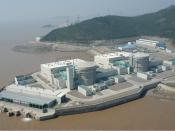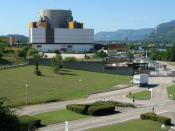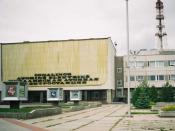Waste, Radiation, and Danger; The Hanford Nuclear Power Plants
Are nuclear power plants dangerous? In a word, yes, and Hanford is one of the oldest ones around, producing radiation since 1944. Radioactive materials emitted from a nuclear power plant, such as Hanford, can injure living tissue, and a high enough dose can kill. The public has seen the danger, although over a decade ago, the meltdown at Chernobyl will not be forgotten, and cannot because the evidence is still there. The harmful elements that nuclear reactors contain are numerous, and are potentially a source of energy for catastrophe. The waste is piling up to an overwhelming number, the Hanford watch website estimated about 54 million gallons just from Hanford, to which we are just beginning to take care of. The health of all living things as well as the earth must not be compromised for a source of power that could and should have been substituted for a more environmentally/human friendly energy source.
Nuclear power plants all use fission to make energy, fission is the splitting of atoms, and in this process energy is released.
The first large-scale nuclear reactors were built in 1944 at Hanford, Washington, for the production of nuclear weapons material. The fuel was natural uranium metal; the moderator, graphite. Plutonium was produced in these plants by neutron absorption in uranium-238; the power produced was not used. (Nuclear)
Most reactors now use this energy to create steam to turn turbines that produces electricity. This process creates waste that has become one of the leading problems with nuclear power plants; it takes hundreds of thousands of years to stabilize. Nuclear power plants don't last forever; the shield itself that is supposed to block radiation becomes more and more contaminated with each reaction. At some point, it will...


